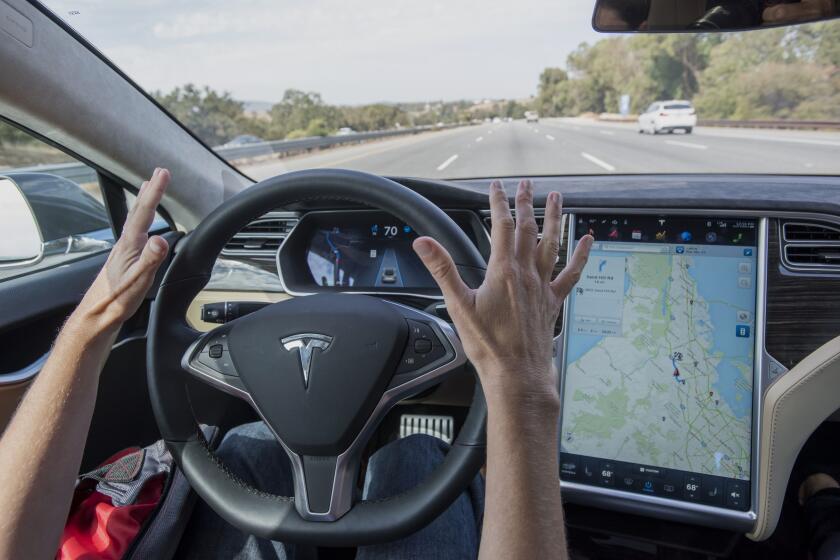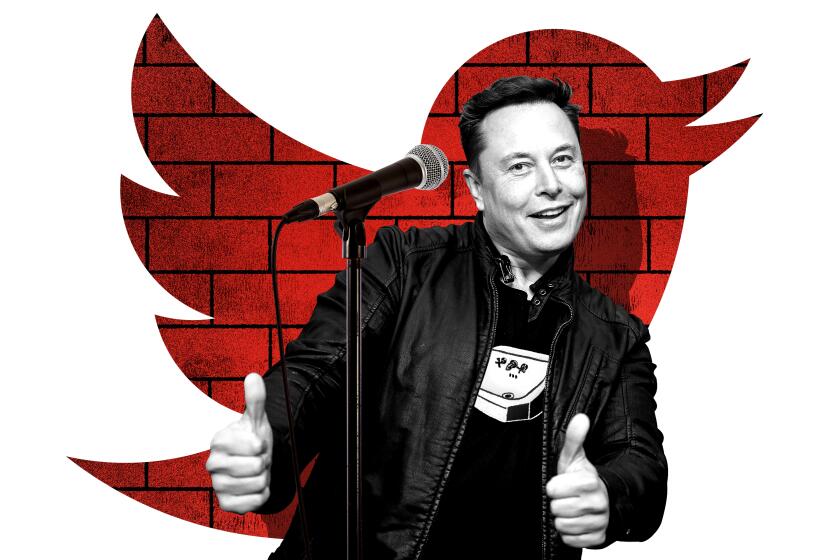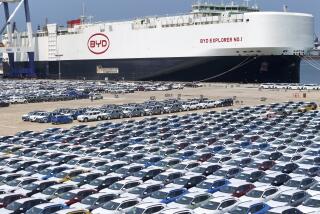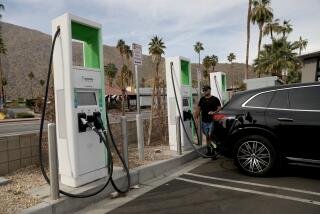Beyond Prius, Tesla’s S-X-Y: Electric car branding is weird. Who thought the e:Ny1 was a good idea?
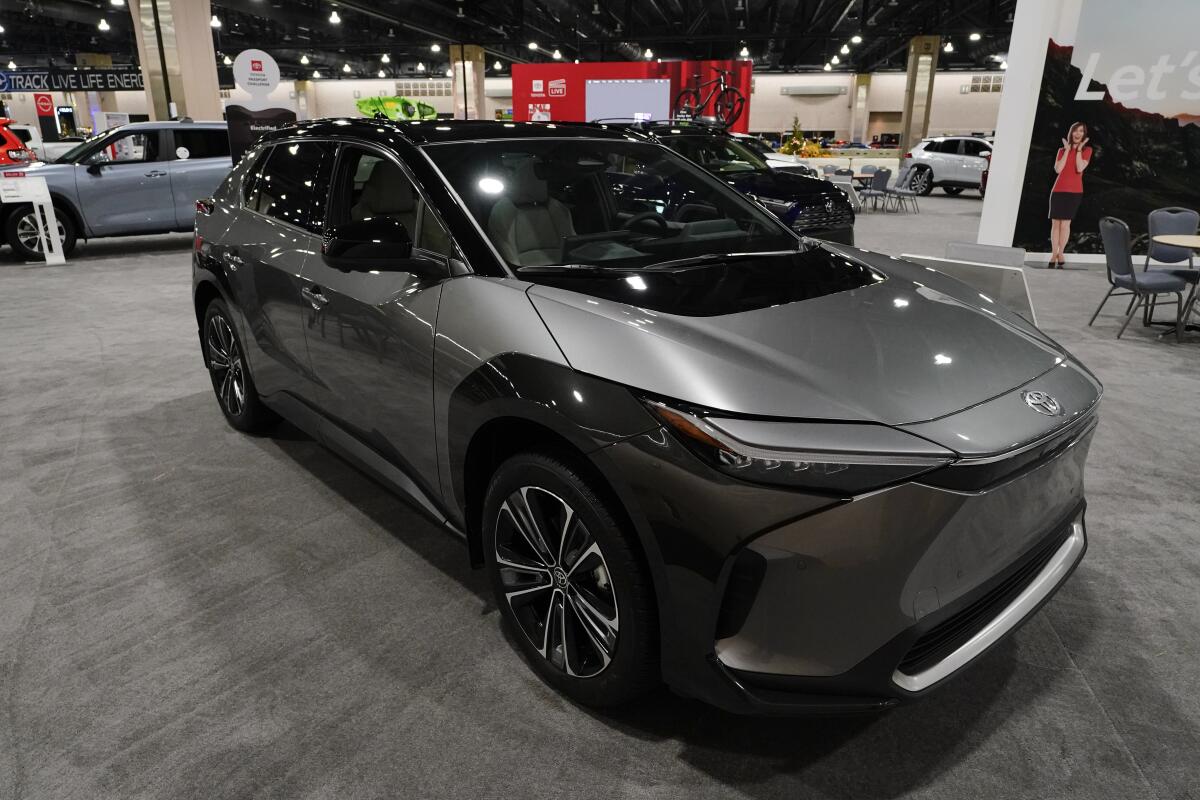
- Share via
Who named that EV? Really, who thought the bZ4X, EQE or e:Ny1 was a good idea?
Beyond Prius, Tesla’s S-X-Y: Electric cars branding is weird
The chance to name a new car is precious, a billion-dollar branding exercise with decades of potential staying power.
Of the almost 300 vehicle models in the U.S., roughly a quarter bear names that have been around for 20-plus years — even when the underlying car has changed. The Porsche 911 was introduced back in 1965, one year after Toyota unveiled its first Corolla. Making its debut in 1934, the Chevrolet Suburban is the oldest badge in the business.
Over the last few years, this rite has kicked into overdrive.
Carmakers are racing to electrify their product lines and launching new vehicles at a pace not seen in decades. Battery-powered driving offers a cleaner, quieter and eventually cheaper way to travel — an aspirational trifecta that branding squads must distill into a slew of catchy new car names.
It’s not going great.
After Uber and other gig giants failed to pay a mandated rate hike, two eagle-eyed drivers started asking questions — and won a jackpot for California gig workers.
Take Toyota Motor Corp., the world’s largest carmaker. The company has been perfecting battery-powered vehicles since the late 1990s, and finally unveiled its first mass-market EV in 2022.
Its title? The bZ4X.
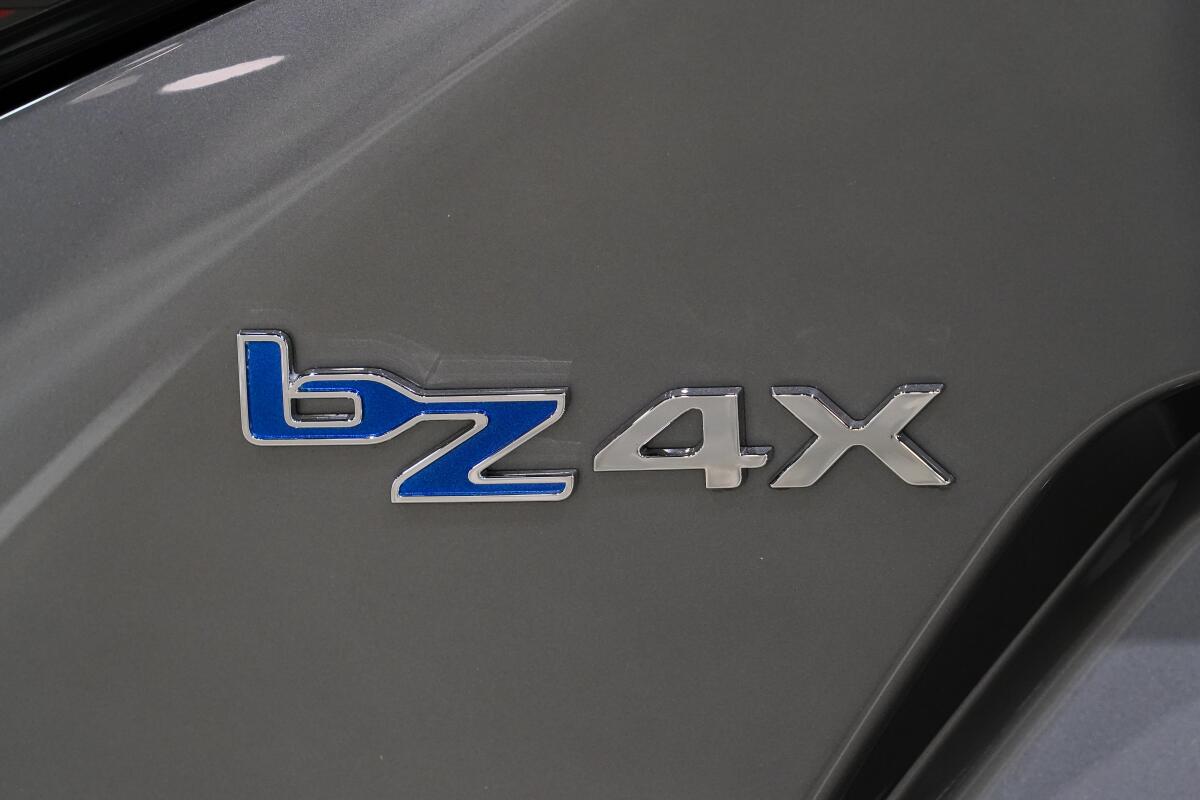
The “bZ” stands for “beyond zero” emissions; the 4 refers to its four-wheel drive and X denotes a crossover shape — all of which is probably lost on the Camry crowd.
Not to be outdone, Honda Motor Co. announced that its second EV will be known as the e:Ny1, a gamble on the appeal of a colon.
Over at Jaguar, a driver could be forgiven for assuming the carmaker’s electric option is the E-PACE, but that model has a gas engine. The battery-powered Jag is the I-PACE.
And no one could fault a Volkswagen fan for confusing the carmaker’s ID.4, an SUV-shaped EV, with the ID. Buzz, a recast of the company’s famous van.
State legislators are pushing a bill that would delay the advent of driverless trucks and wrest away regulatory control from the Department of Motor Vehicles.
“Honestly, a lot of these names are just trying too hard,” said David Placek, founder of Lexicon Branding, which helped name Lucid Group Inc., the Subaru Outback and the Honda Ridgeline. “Everyone is kind of scrambling.”
Placek said a great product name needs to check three boxes: It has to be memorable, noteworthy and distinctive within its category.
It also helps if the moniker is “what we call ‘processing fluent,’” Placek said. “When the mind looks at it and says ‘OK, I can get that.’”
Many new EV names fall short. They either hew too closely to tradition to feel noteworthy or stretch so far for distinction that they aren’t memorable.
No one’s saying naming a car is easy, or that doing it poorly is unique to EVs (see: the Daihatsu Naked, the Ford Probe and the Studebaker Dictator). A car’s name may also matter less to consumers than its price tag, range, features and aesthetic.
But as an exercise in marketing, the raft of clunky EV names represents a missed opportunity.
‘Like an alien’s version of comedy.’ ‘The sense of humor of a horny dentist.’ Nikki Glaser, Hari Kondabolu and other comedians on Elon Musk’s desperate quest to be funny.
Just look at Tesla: The company may have failed to spell out “SEXY” with its four models as planned — “Model E” was trademarked by Ford six years before Elon Musk launched his sedan — but the attempt was as memorable, noteworthy and distinct as it was juvenile.
In some cases, today’s EV names also highlight a disconnect between R&D and product planning. Nearly every automaker has set an ambitious timeline to completely switch to electric vehicles, but that memo may have been lost on the people naming the Kia EV6, for example, or the GMC Hummer EV. Those labels will age as well as “the New York Football Giants.”
“They’re just dating themselves,” Placek said. “Within five years almost everyone driving a new car will be in an EV or a hybrid.”
There are also the names that metastasize, tacking on letters or becoming less clear as the variants proliferate.
Audi launched its seminal electric vehicle as the “e-tron” — sensible enough — but now it has a slew of e-trons, including the original and a (very different) e-tron GT.
Mercedes-Benz made a similar hash of it: The company’s EV models include the EQS, EQA, EQB and EQE, as well as the EQS SUV, EQB SUV and EQE SUV. At the very top end, Mercedes also throws an “AMG” into the mix. No one wants to drive an alphabet salad.
Volvo spinoff Polestar Automotive Holding UK, meanwhile, took the iPhone approach: Its first car (no longer in production) was the 1. Now there’s the 2, and 3 is coming soon. Polestar 12 is going to be bananas.
The best EV names arguably aren’t acronyms or jumbles of letters; they’re fresh and nouny and fun to say.
General Motors Co. took this route with its Chevrolet Bolt and Cadillac Lyric. Hyundai’s Ioniq clicks nicely. Lucid has its Air, Fisker its Ocean, and Subaru its Solterra.
Then there’s Nissan’s Ariya, allegedly a tarting up of the Sanskrit word for noble or admirable. Porsche’s Taycan is a unique choice, but also conjures to mind an elusive jungle beast.
There will be more opportunities to improve upon the current crop of names: In the next year alone, we’ll see 30 all-new EVs in the U.S., according to BloombergNEF estimates.
Until then, pour one out for the Toyota team who pitched “Prius,” which still has a nice snap 25 years on. They must have retired before Toyota’s bZ4X came along.
More to Read
Inside the business of entertainment
The Wide Shot brings you news, analysis and insights on everything from streaming wars to production — and what it all means for the future.
You may occasionally receive promotional content from the Los Angeles Times.

